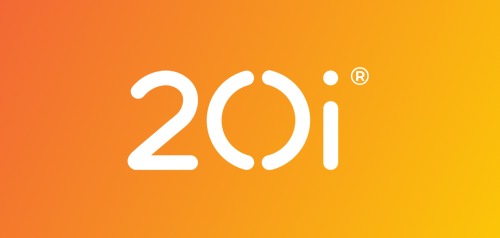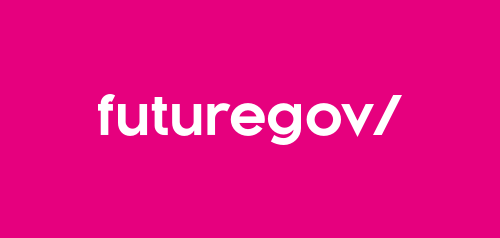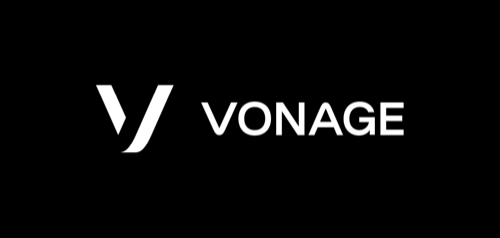Transcript
SHIVANGI: Hi, everyone. The whole world shook when the pandemic took over, and changed the way we live our lives - travelling, socialising, working from the office, just basic everyday things stopped right in their tracks. People lost their jobs, businesses have been shut down, doctors and nurses have been working overtime, and so much more. Those of us who have the support in the companies we work for have been lucky to work from home at such time, and, with it, comes its own set of challenges. We want to share with you our experience from working from home and share some of the lessons we've learned that can be applied from your own work routine.
I'm Shivangi, it's a pleasure to learn my lessons from working from home. I've been in the tech industry for a year now. After graduating from Trinity College in Ireland, so really most of my work experience has been from home. I'm currently with the Enterprise architecture division at Amex, dealing with APIs, gateway, Kubernetes, the whole DevOps package. I have a technical blog on Medium. Anything new I've come across, any new project I come across, I've posted on Medium. I started a new publication talking about sustainability, taking a solution-based approach to environmental issues at a very basic individual level.
MASSI: Hello, everyone. I'm Massi Mapani. I've been working in the technology industry here in the UK from February 2020. Under the same graduate scheme at American Express. This scheme gives exposure to different sectors and departments that information technology can be applied and implemented in an organisation. I graduated from the University of the Wiwatersrand in Johannesburg, South Africa, and I also have a passion for writing, and I've been blogging on Medium about immigration, relocation, and financial service provisions for the African market, and you can find those on Medium, and the African Millennial Concepts. I would like to stress that the lessons and experiences we are sharing are unique to our own experiences and are not affiliated to any organisation.
MASSI: So the first lesson we would like to share is about having realistic new high expectations, right? Just as Shivangi mentioned, the pandemic and the guidelines to work from home, travel, and socialised changed from March 2020 onwards. I had personally began my new job in February and these events were shortly after beginning my new job, and this was a disruption for my life events which were in motion at the time. But, it also altered the traditional expectations I had for beginning a new job. My expectation of face-to-face supervision, adjusting to the expected schedule, the transportation systems, and also the networking opportunities with my colleagues as well as finding out more about the organisation I worked for, all got disrupted, and changed, when it all went into lockdown.
Just as the aspects of restrictions, and lockdown disrupted my life events in motion, it was important for me to realise that I didn't have to be so hard on myself, and the pressures that I had put upon myself to get and where I wanted to be up to the end of the year. Taking a step back, and realising that control and my personal mindset attitude, they were my own actions, and basically, shifting my perspective towards the results of the pandemic, and the restrictions that came with it could impact how I performed at my job. And it was a major lesson that I learned. Depending on anyone's personality type, control and choice can be a major difficulty to overcome and grasp, especially if you feel that you don't have much of it. I found that the control and aspects of my life impacted my performance at my job. These were all aspects that impacted my work and my work from home flow, and presented challenges that I had to overcome. I'm going to share with you some of the challenges that I had working from home, and I hope that they're relatable and you cannot only relate to them, but also pick up aspects of it that are applicable to your own scenario.
The first challenge I faced was moving to a new country. Amidst the disruption of a pandemic. I had preconceived ideas of what it would be like to live and work in a new country. I had moved here snored to start my own job and interact and get comfortable with the new systems, and everything I was hoping to find and discover while I stayed here. Letting go of my initial standards, aspirations, and expectations around my relocation, and looking forward to the aspects of change and adjustment had to be realistic, especially with the disruption of a lockdown. Acknowledging my inability to control the rules, and limitations, and the lockdown and government guidelines was hard, and I had to be able to understand and define what control I had over my environment, so, one of the ways I was able to do this was moving house. I found that adjusting to working from home had intertwined into my living routines, and not in the most organised way. I was eating, sleeping, doing everything in the same space, and I needed to define some lines in order to have some separation, and shift of mindset in my physical environment, and prompted me to move, and this - and this prompted me to move house.
Un balanced mix of work and other aspects in your life can affect your mental health as well as your performance at your job. Finding a space where I could separate my daily activities was important, and allowed me to find a decent environment to do and understand my job. One of the underlying factors that crept up on me, even with the positive proactive steps of changing of moving house was the culture shock. Culture in the sense of my organisation and how my colleagues and things were done, professionally, as well as personally after moving house, and moving to a new country, and how I interacted with my environment.
This unexpected culture shock comes with settling into any new life experience. In these moments, I found that adopting patience and seeking out coping mechanisms in order to deal with and sort of handle my culture shock were a great way of adjusting. Additionally, understanding that the use of work as a deflection mechanism for my personal struggles was a difficult non-technical skill, which I had to regulate and monitor, and keep note of as the year went by. Honing - hoping to continue at unsustainable pressure of stress has to be self-checked, leg rated, and dealt with, and this happens on a professional level as well as on a personal level. You may find that, when you initially started working from home, this may have been your case too.
SHIVANGI: Massi talked about the disruptions that we faced, and this has directly impacted our transition to and from a work mindset. This lesson addresses the disruption and the importance of having a morning and end-of-day routine. Not having to travel to work means extra time in bed. Initially, I really enjoyed the extra sleep but it meant less time for myself in the morning before starting work. I would wake up, quickly freshen up, sit at my desk and open my laptop, which was not ideal at all. I ended up getting tired earlier on in the day because I didn't have a set morning routine and time to start the day properly. Now, when going to work, the commute was the fun bit where I would drink my smoothie, read my book, or even meet a colleague and chat with them through the entire train ride. This was a great transition into starting my work day but there was none of this when working from home.
Of course, in a work-from-home setting, it can get tempting to stay in pyjamas all day. It's true what they say. You've got to dress the part. If you're dressed to bed, you're going to feel like going to bed. Dressing up on a normal work day helped me transition into a work mindset. Keeping these three points in mind, I changed my routine to where I now wake up at least an hour before work time starts, dress up in proper work day clothes, pyjamas and loungewear with a big no. I get some breakfast, some tea, and I read my book.
So having a relaxed morning like this as opposed to a rushed one has really helped me ease into my work day properly. And, of course, just like it is important to transition into a work mindset in the morning, it is equally important to get out of it in the evenings too. Now, when you leave a traditional office, you're often done for the day, and so we have to approach a work-from-home situation similarly too. I would go out to a walk to the beach or to the nearest store to get some snacks. What really happens is leave the work space physically. There is a very thin line between work life and home life, and it is up to us to make sure that those lines don't get blurred.
The next lesson is how not to feel isolated at work. Early in March 2020, it was only a week into my new team, and made to work from home right after. The only way to communicate with my colleagues was slew Slack or Webex, and the initial few weeks was setting up my system with tools and apps and services, and not being able to do this in person was frustrating, confusing, and time-confusing. Then it was the fact that I barely knew my colleagues. So all of this made it very difficult to fit in. But I've got to say, transitioning into a work-from-home setting with that team was a great experience, and here is how.
So we had stand-ups at 10 am and our team encouraged us to switch our cameras on. We would then chitchat about anything but work-related topics, and those few minutes would liven up the morning. The key takeaway is to be camera-ready, even if one person has their camera on, that could be you, it encourages others to do the same thing, and it is always nice to see colleagues' faces. So being new, try to be more active and make your presence heard and seen online. Also, another pro tip is to try to join meetings slightly early, and then you might end up having a fun conversation with a team member. Now, especially if new to the team, take the initiative of reaching out to your colleagues to set up some time for one-to-one video calls. Ask them about their work, their past experiences, their specialisation, the industry, network within your team as much as possible. And through this, you will know the best person to talk to, whether it is about Java frameworks, Docker, or the products side of things.
If you're stuck somewhere, make sure that you reach out to your colleagues and don't ever be afraid of asking questions and asking for help. The best way to communicate would be to set aside a good amount of time to go over all of your doubts via video or an audio call, rather than messaging. It's much easier and preferable to communicate by screen sharing, rather than sending screen shot after screen shot, which can get very inefficient and frustrating at times. The fastest way to learn is pairing with someone else. I pair-programmed through the my entire second rotation and it was a great experience.
First up, you never feel isolated as you're constantly on call with your peer programmer. Second, as I was new to the team, there were many things that were new for me. Peer-programming helps to fill the knowledge gap and speed up learning a lot. There is a lot of techniques, like the driver-navigator, or the Ping-Pong technique. No matter what stage you're at, it can be adapted to a remote setting. We would plan our day in the morning after our stand-up, and as needed set two different branches and help each other out as much as needed.
Now, of course, there are chances in the communication and plenty of Git merge resource but nothing that can't be solved by more screen-sharing and using audio and video. Facial expressions are very important and it is always nice to see your peer programmer's video and the shared screen at the same time. So don't shy away from peer programming. In fact, suggest even more in your team. Lastly, take the initiative of setting up virtual coffee or lunch with your colleague. Apart from the professional benefits of being a great team--building exercise, networking in your team and learning from others, it also prevent social isolation.
MASSI: Just as Shivangi shared taking initiative and - I would like to share the next lesson about adapting to growth. The unpredictability of working from home has had a significant impact in the way that we view time passing, especially during the work year of 2020. This may have been the case for a loft of people. Growth during the course of the year could have occurred personally and professionally. Growth doesn't always mean a positive narrative. Growth can be can bring to light areas of weakness that you may need to work on, and that is okay.
The way in which you're able to deal, manage, and work on your growth, on your different skills with important to how you build your own professional persona. Being able to build, develop, and grow these with your colleagues and get tasks done in the process can affect your own personal professional development. I fell victim to a couple of the inefficiencies which Shivangi mentioned in the previous lesson. I had issues with my communication skills. As well as being able to relate to colleagues I'm not so familiar with.
Courage to admit, communicate, and be authentic about your own weaknesses and move forward from that point after your self-reflection is important to being an all-round individual. Personally adapting change and - personally adopting change and bringing that change forward to your professional persona and interactions can help you be a more all-rounded individual, and positively affect your skills in doing your job. Non-technical skills are not taught, and bringing that forward can be advantageous to how people interact with you - be approachable where people feel comfortable enough to help you, and as well to offer up help in the areas in which you're lacking.
SHIVANGI: Massi talked about growth in the previous lesson. In this lesson, we are going to talk about how to be more productive in a work-from-home setting. We're in a meeting. I know we've been tempted to do something else. If you were in the office, you would surely be listening in and even making notes. Being at home, it's easy to get distracted and start mindlessly browsing away on the internet. Once I realise that I'm lacking concentration during meetings, I made it a point to consciously listen in and keep a time distraction free, and remember to take notes.
The Pomodoro technique works well for productivity. It breaks your work day into 25-minute chunks separated by five-minute breaks, and you can get a Chrome extension which does exactly that. You will be able to track the amount of time you spent working. And there are two ways to go about it. First is get the task done method, so do the task, no matter how long it takes. And second is "hit the target"ed method. The idea is to allocate a certain block of time to the task that is not necessarily completing it, so much as spending a certain amount of time on it. It is a motivating factor to see the number of Pomodoros you've done in a day.
If you're working on short sprints, this makes sure you're consistently productive. When you see the timer, it's harder to get distracted. Lastly, take frequent breaks. In the office, I would get up once every hour to get some water, or tea, and would usually end up meeting a colleague, and chatting with them. Those are much-needed breaks that we tend to miss out on working from home, so make sure that you step away from your desk to consciously stretch, relax, and just breathe.
MASSI: It's important to have practical examples of breaking your day up, but what about the environment in which you are working from home? Taking ownership of your space, and being able to shift into your work mindset and away from it, whether physically or mentally is important. So the next lesson, we are going to share with you is how to take ownership and be creative from your work-from-home set-up. The space that you initially chose to live in may not have been the space in which you found yourself working in. But, that's 2020 for you! Moving forward, I think it's important to take ownership of the space, and find different ways, creative ways, to get it to work for you.
The different aspects which you need to consider whenever you're choosing, or adjusting your space to work for you. We're going to share with you our current work-from-home set-ups and some of the changes that occurred during the course of 2020 that have made us make our work spaces work for us. This is my current work-from-home set-up. I tend to get a bit distracted during the times when we have long meetings, like sprint planning, so drawing attention to that meant I needed to remove a lot of the distractions that I found were in my work space. During meetings, just like Shivangi mentioned, you may find in a you're wandering, so taking physical notes for me helps me have a point of reference to get back to. Also, being able to visualise some of the aspects which my colleagues are mentioning during meetings, or when we are peering-programming, or working on features, is important for me to visually conceive and understand what my problem to solve is, so I found that having a second screen was really good for me.
SHIVANGI: This is my current work-from-home set-up. The biggest pro is the massive window in front of the desk which allows for ample natural light throughout the day, and does wonders for boosting my mood and productivity, and allows me a very nice view. My old work space was lacking in natural lighting making the set-up feel dull and unwelcoming. The table is a good size to accommodate all of the essentials. I try to keep it as tidy and clutter-free and possible, and the addition of the two flower pots are a great way to add colour and liven up the set-up. Being in a tech role, we have to sit at our desks for long stretches of hours, and so investing in a proper desk and chair was top priority for me. It's vital to have a space that is both inviting and comfortable. The next couple of slides that we're going to share with you are of home set-ups we found on line which we found were creative and inspiring.
MASSI: That set-up makes use of four screens. The person can adjust their seating position depending what they need to focus on, on how they're breaking up their day. They can shift slightly to the right, or the left, depending on what they need to focus on. So on the right side, you can see that they're maybe trying to take a break, and having a look at their socials. They can also adjust their eyesight to the top screen when they want neighbour to have a look or analyse some of the data that they're using to do their job. A different way of breaking up their day as well could be through the headsets they're utilising. You may not want to be chained or stuck to your desk the whole day, and being able to plug into a meeting, or plug out and listen to music to take your break and walk around is a good utilisation of your space. You can see on their desk, they take notes and Doodle in order to grasp or come up with new ideas. I found that this different utilisation of spare space very inspiring.
SHIVANGI: This is a very impressive set-up, with a minimalist structure. The table is big enough to accommodate all the accessories, and so neat and tidy. It has no wire clutter. The big points are amazing, allowing natural ample light throughout the room, and the two huge screens are a great way to spread out and distribute your applications and ramp up activity. With just one laptop, I find myself getting frustrated many times when switching to Slack, to email, to Chrome, and back to my code in a single screen. And also, having a big enough screen size puts less pressure on the eyes. I often find myself being too close to my laptop screen when going through code. Finally, sitting at our desks for long hours is bad for the posture, so a standing desk is a great way to break up the monotonous routine of constant sitting.
MASSI: A space can mirror who you are in different ways and help break up your day. Getting a space to work for you may require you incorporate some of your truss, such as music, artwork, or even gaming - music. Whatever other hobbies you have to shift from your personal mindset to a work mindset, a space may find that you need to have familiar aspects in it, whether it be having a pet nearby, or personal pictures, or personal quotes, motivation, whatever works for you. Whether you need to take notes, you may need different stationary, or even different accessories, or difference in lighting, investing time and energy, and being mindful about the space in which you're working. It helps you get into a mindset that allows you to function and do your job. SHIVANGI: We hope these pictures are inspiring to get creative with your own work-from-home set-up and to take a few lessons away about working from home. Finally, thank you so much for tuning in to hear our talk.











